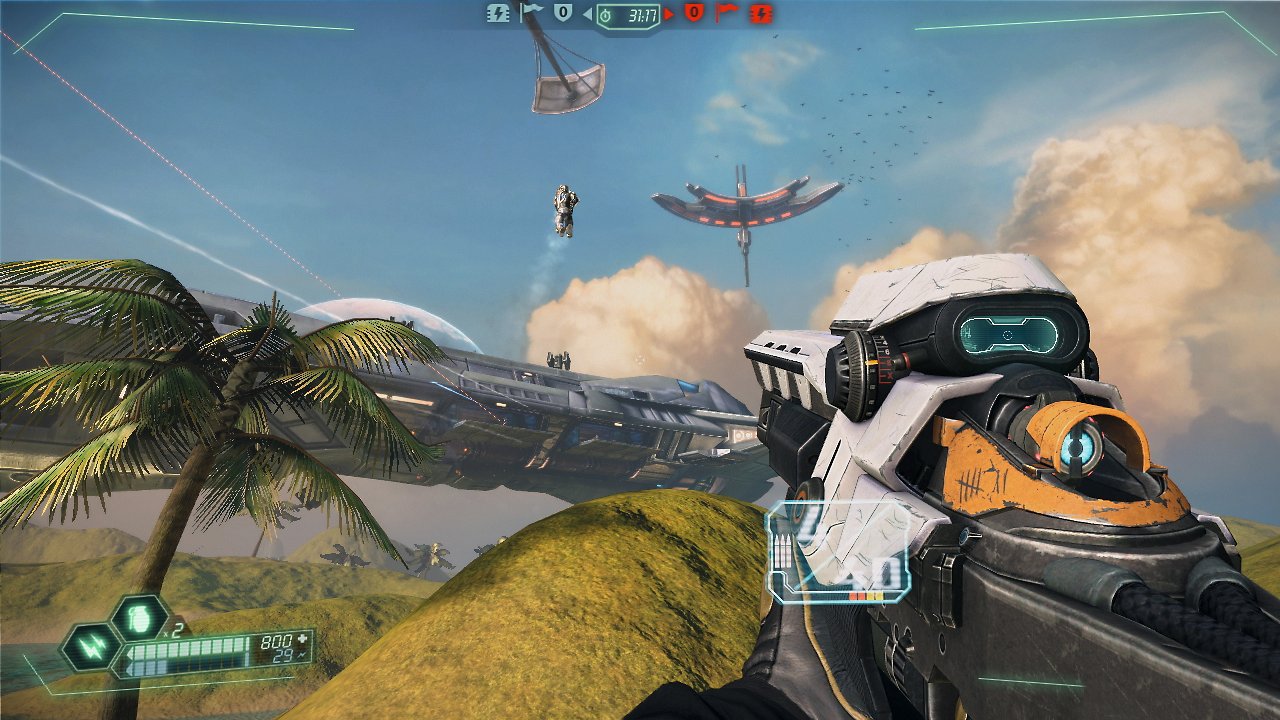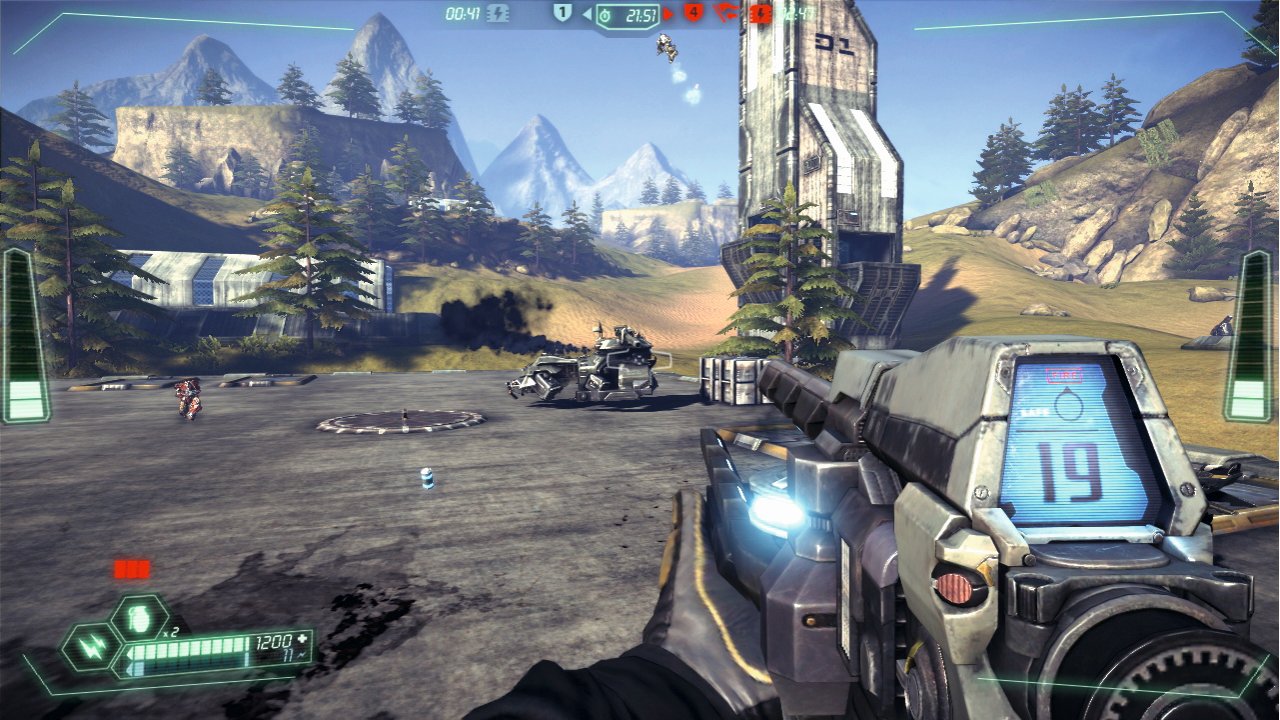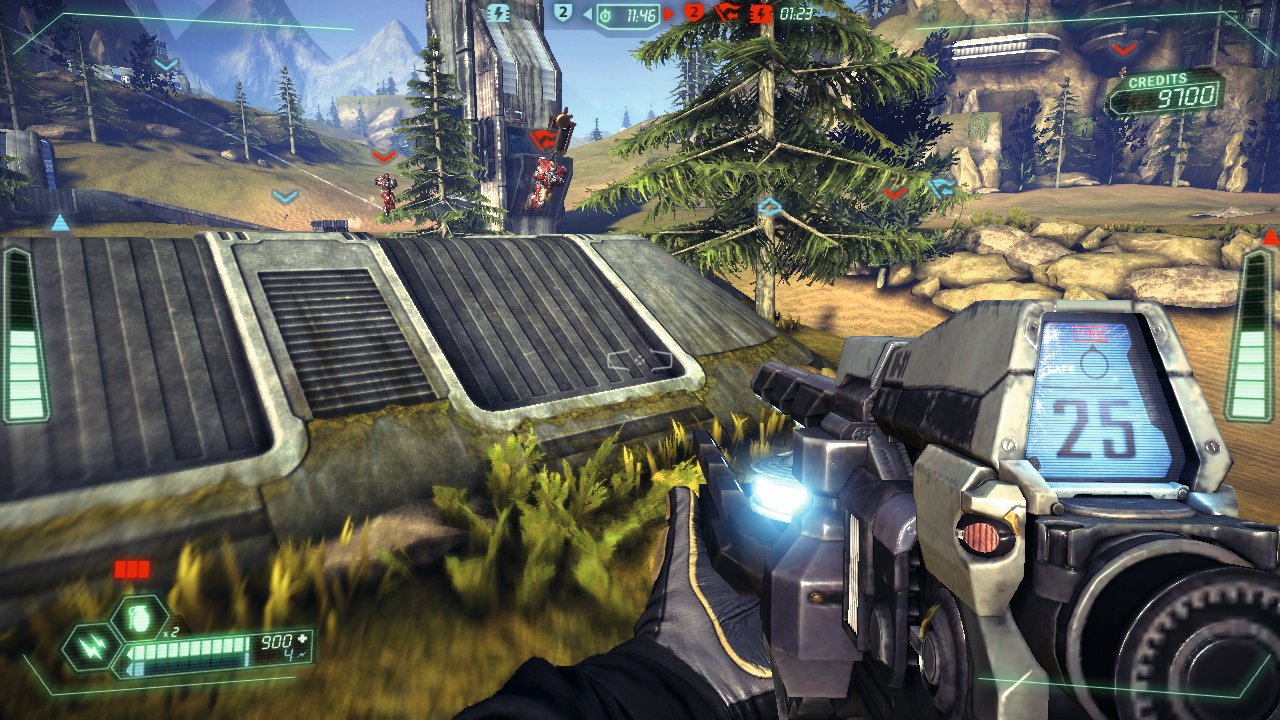The surprising return of Tribes: Ascend

It’s tough to hold on to that frustration when you meet the people who made the game, and given how transparent Hi-Rez have become in the last few years I wonder why they were so quiet about the situation with Tribes. “We were totally different back then,” McBride says. “It wasn’t like we were trying to hide anything from anybody, we just didn’t know what we should say and how we should say it. We did a better job than with Global Agenda, but it’s always a growth thing. We made a lot of promises early on that we shouldn’t. We’ve learned a lot of lessons since then.
“Now it’s a totally different thing, right?” McBride continues. “We go to the community and we talk to them about it. I created a five-page document of all the community requests and ranked them by how many times I’ve seen them. It’s very driven by the community.”
The Out of the Blue update removes several features implemented in order to make Tribes: Ascend work as a free-to-play game—classes, for example, as well as a massive number of ‘sidegrades’ for each weapon archetype. This directly makes the game less viable as a business venture. I ask McBride if this means the decision to return to the game was more ‘heart’ than ‘head’.
“It’s both, honestly,” McBride says. “I personally feel a responsibility to come back and make it a better game because I love it. At the same time it is a business decision. It’s a really rough spot in our company’s history—leaving the game.”
Although Tribes devotees may feel that their game was put aside in favour of Smite, the MOBA’s success is what has allowed Hi-Rez to re-establish a small Tribes development team. “We had enough manpower and enough resources,” McBride says. “We’re, like, 225 people now—we could spare a few.”

Given the small size of the new team, I ask McBride if they ever considered making a simpler, subtler update—a set of fixes rather than a major overhaul. “I felt that if we didn’t do something fundamental and big then we wouldn’t have players come back,” he says. “Let’s really embrace the fact that it’s going to be different now and draw players back with that. Ultimately I felt like players would be bored if it was totally the same game with some new maps and balance changes.”
There’s a performative aspect to this decision too—the scope of the changes is a way of building lines of communication with the community. “It set the stage, right?” McBride says. “This is how big of a change we’re willing to make to the game, so come back, talk about it, give us other ideas, you know?”
The biggest gaming news, reviews and hardware deals
Keep up to date with the most important stories and the best deals, as picked by the PC Gamer team.
Despite the clean slate, I’m interested to find out if there’s anything McBride felt he couldn’t do with the update—a change that he’d like to make, but that wouldn’t work.
“The number one thing for me is, when I first started, I wanted to change the physics,” he says. “I wanted to change how the game felt. I didn’t necessarily want to make it feel like Tribes 1, because the bounciness of its skiing is very odd for new players, but I wanted to redesign how we were doing speed limiting. We’ve really been slammed a lot for speed caps, and it does feel a bit arbitrary—I’d much rather it be resistance-based. We also get some pretty big slams for feeling floaty. That’s a very mixed bag of different issues, but the physics are the number one thing that I wish we could have changed a lot more.”
Ultimately, Ascend’s skiing mechanics were felt to be too intertwined with the core of the game to be altered. “We couldn’t do that because it’s a very deep change, fundamental to Tribes, and it probably would have screwed up a lot of maps,” McBride says.

You might not get to play McBride’s perfect version of Tribes, in that case, but you do get to play one that he—and the community—seem to be happier with. McBride raises a point about the Tribes community that is important, and sometimes forgotten: not everybody is on the same page about what makes Tribes special. In the era of reboots and nostalgia-powered crowdfunding campaigns, it’s easy to forget that the classics of the late ’90s were different things to different people.
“Different people remember different things,” McBride says. “Some people remember it being a big, vehicle-based game. Some people remember it being about skiing and mid-airing people. Some people remember siege mode, some people remember Capture the Flag. It was tons of different things. Most people don’t even remember the core game, they remember a mod they played because the mods were server-side. The community is so fractured that it’s hard for everybody to decide what they want to see out of a Tribes game. That’s an unfortunate situation.”
In that case, I ask, what does ‘done’—or ‘leave it in a better state’—look like? “
If people don’t say ‘Sean killed Tribes’, I’ll be happy,” McBride says, simply. “Generally I’m pretty happy with where the game is right now. I wish we could have done more things. For me, games are like art—it’s not finished, it’s abandoned. That’s just honestly the truth.”
Joining in 2011, Chris made his start with PC Gamer turning beautiful trees into magazines, first as a writer and later as deputy editor. Once PCG's reluctant MMO champion , his discovery of Dota 2 in 2012 led him to much darker, stranger places. In 2015, Chris became the editor of PC Gamer Pro, overseeing our online coverage of competitive gaming and esports. He left in 2017, and can be now found making games and recording the Crate & Crowbar podcast.


